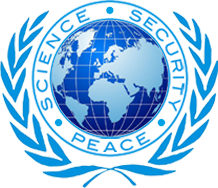
Defusing World Crises:
A Scientific Approach
W
orld leaders are struggling to find appropriate and effective responses to ongoing crises and conflicts around the globe—in Syria and the Middle East, Ukraine, Africa, and elsewhere. These conflicts have already displaced and traumatized millions of people and destabilized regional balances of power.Unfortunately, the options available to our military and political leaders to resolve these conflicts are poor. Military interventions lead to further loss of life, inflame an already volatile society, and often trigger a retaliatory response—the historical downside of attempting to create peace through violence.
Diplomatic efforts face similar challenges. In a region torn by historic, deep-seated political and religious tensions, lasting solutions have been difficult to achieve: negotiated settlements and ceasefires seem to afford only fleeting relief. When societal tensions are acute and passions are inflamed, paper treaties have proven too fragile a basis for lasting peace. How, then, can these historical conflicts and resulting humanitarian crises be addressed and overcome?
Addressing the root cause of violence
Conventional approaches to conflict resolution and conflict prevention are ultimately ineffective because they do not address the underlying cause of violence and social conflict: acute societal stress—mounting political, ethnic, and religious tensions in critical hotspots around the world. If these societal tensions continue to grow unchecked, they inevitably erupt as social violence. Therefore, for diplomacy and other conventional approaches to succeed, we first need an effective means to defuse these deep-seated tensions—and prevent them from ever reaching the boiling point.
Fortunately, research has shown that it is possible to effectively defuse acute societal tensions through the use of powerful, evidence-based, stress-reducing, peace-promoting technologies by even a small subportion of the population—an approach that can be easily implemented within the military, or even in large schools or universities.
The Global Union of Scientists for Peace, in coordination with affiliated institutions and organizations,* has been researching and implementing this approach for over ten years in dozens of countries throughout the world—with highly promising results. This new peace-promoting methodology is based on the most recent discoveries in physics, physiology, and neuroscience, and is referred to here as the Brain-Based Approach to Peace.
*E.g., Maharishi University of Management, USA; Maharishi European Research University, Netherlands; Maharishi University of Natural Law, U.K.

